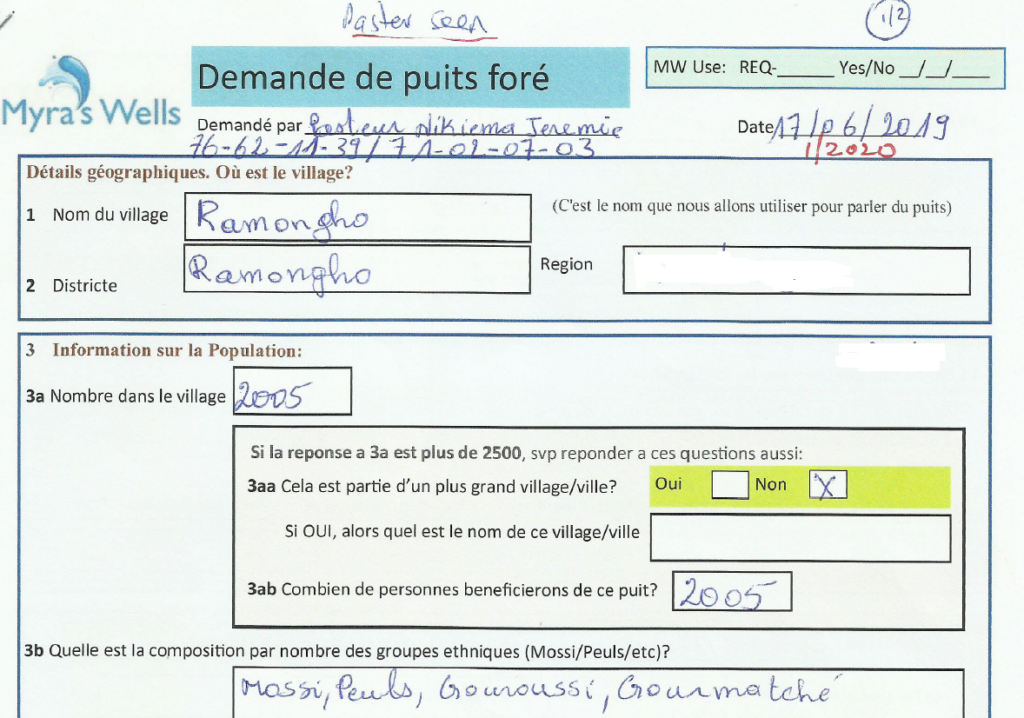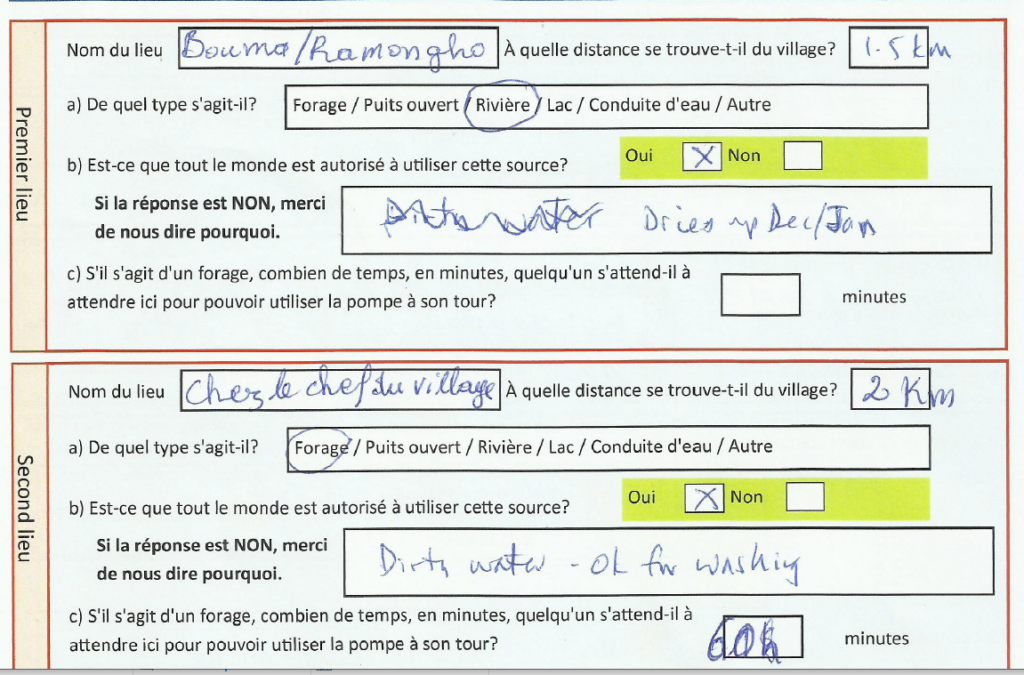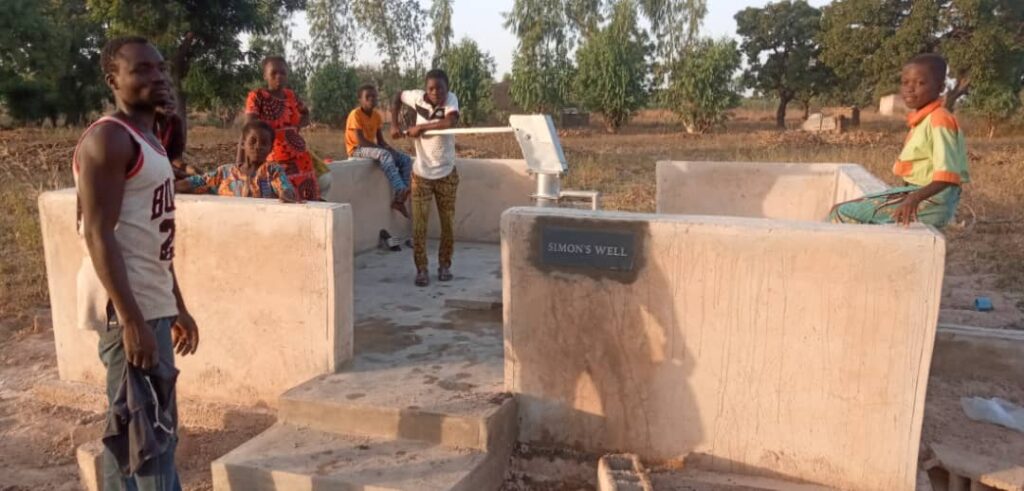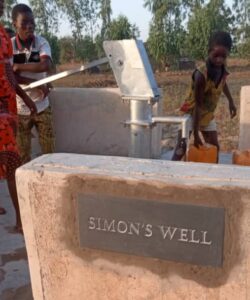The situation at Ramongho
Ramongho is not far from a town west of Ouagadougou. 2000 people live there. Yet there was no clean water there.
Before we consider drilling a well, we ask for a Request Form to be filled in. We ask questions about the people who live there and where they obtain water. This is a summary of what the Request Form from Ramongho told us:
Demographics:

Number of people living in the village: 2005
Heads of cattle: 50,000
Ethnic groups: Mossi, Peul, Gouroussi, Gourmatché
Sources of water:

- A river 1.5 km from where most of the people live.
- A proper pump 2 km away, near the house of the chief. However, this pump dispenses dirty water which is not fit for drinking. There is often a queue at this pump. The waiting time in the queue can be an hour.
- A proper pump at a local dispensary. Even here, the pump also gives dirty water which is not fit for drinking.
Schools:
There is a school in the village. With such a poor supply of water, there would be none for the children while they were at school. With such a poor supply of water, many of the children would not even have time to go to school. They would be too busy trying to find water.
A poor situation
Clearly, this is a poor situation. We are not convinced that the number of cattle is correct! However, even if it is only 5,000 (which could easily be the case), that would be a large number of cattle needing water as well as the 2000 people. The cattle will be the means by which many of the people earn money.
There are many places in Burkina Faso which have stories which are similar to this. There is just no clean water.
Can we help them?
We spoke to the local pastor. He came to see us while we were staying in Ouagadougou. There were many other questions that we asked to make sure we understood the full situation. Then we decided that we should try to provide a proper well at Ramongho, supplying clean water.
In early October 2020, we arranged for a drill to go to the village. It was a successful borehole which produced a very good supply of water. This very short video clip was recorded towards the end of the drilling process.
The vital questions were “Is it clean? Can we drink it safely?” The laboratory report came back. “Yes, it is fine to drink”. We give God the glory for helping the people in this village.
The finished well
Here is the finished well. The unusual thing about this photo is that it is young men using it. This is a rare sight. It may be that they were using it so as to be in the photo. Normally, it will be the job of ladies and children to fetch water.


The plaque shows that it is “Simon’s Well”, donated in memory of a son who died of cancer.
“Simon’s Well” is well number 180 on our list of wells.